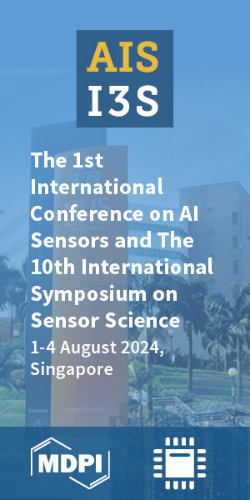1. Introduction
Iron has been recognized since ancient times as an essential element for human health and well-being[1]. In the early 17th century, this element was exploited as a medicine by some communities, including Egyptians, Hindus, Greeks, and Romans, to deal with chlorosis, a disorder usually caused by iron deficiency[2]. For several years, the interest in iron was focused only on its contribution to the genesis of hemoglobin and transport of oxygen. However, in the last decades, the lack of this element has been associated with a nutritional disorder that causes a large number of cases of anemia worldwide in humans. In developed countries, low iron intake and/or bioavailability are the main factors responsible for this disorder, while these causes correspond to only about half of the cases found in emerging countries[3]. In these territories, infections and inflammatory conditions (particularly malaria), blood loss due to parasitic infections and other nutrient insufficiencies (such as lack of vitamin A, riboflavin, folic acid, and vitamin B12), are also significant causes of anemia[4].
Although theoretically simple, the anticipation of dietary iron deficiency seems intricate at the population level, since the outcome of any element is determined by numerous factors, namely its highly regulated absorption, transport, metabolism, and degree of relationship with physiological courses, etc.[5]. Consequently, iron deficiency arises when its levels in the human body are insufficient, mainly due to its scarce intake, excessive turnover, and/or loss of it [6]. Therefore, iron deficiency persists as one of the most prevalent nutritional disorders worldwide, with a larger incidence in growing children, premenopausal and pregnant women, the elderly, and people with chronic diseases [7], which reflect the physiological needs of dietary iron throughout life periods[8].
As long as vitamin and mineral deficiencies remain to be a serious health problem globally, affecting more than two billion people or one in three individuals[9], and mostly in developing countries, the search for solutions that can reduce the harmful effects of these nutritional disorders is of paramount significance[10]. Therefore, in addition to oral and intravenous supplementation and dietary and nutritional education strategies to safely improve the micronutrient status in the human body, fortification and biofortification approaches emerge as relatively profitable and long-standing micronutrient supply strategies for those who, otherwise, may not have access to or cannot afford to have a fully balanced diet[11].
2. Iron Absorption and Regulation Mechanisms
The two main sources of the iron used by the human body came from food and the recycling of senescent erythrocytes[12], through the iron absorption cycle, which is also induced by endogenous and exogenous features, such as individualities of the ingested form of iron and food matrix[13]. In cells, iron is transported to the mitochondria for the synthesis of heme or iron-sulphur clusters, while the extra amount is stored either as ferritin or hemosiderin and purified in cytosolic ferritin[5][6]. Since most of the iron in the human body remains bound to hemoglobin, phagocytosis and abasement of senescent erythrocytes characterize the key foundation of this element (25 to 30 mg/day), whose quantity is sufficient to maintain the daily iron requirements for erythropoiesis[14].
2.1. Effect of a Balanced Diet on the Iron Bioavailability and Absorption
It is well established that the bioavailability of iron is as important as the total iron in the diet. In this field, the chemical arrangement of this element plays an important role, since the two existing iron forms (heme and non-heme) are primarily obtained from different sources. The heme form is mainly present in flesh food, such as meat, poultry, and fish, and has more bioavailability than the non-heme form, obtained, in different amounts, mainly from plants and animal foods[13]. The absorption of non-heme forms by the organism must be improved by other ingredients, such as ascorbic acid and flesh food, which can enhance the absorption of this metal, achieved by adopting a balanced diet. Hence, dietary options and choices can substantially provide dietary compounds that either improve or obstruct the absorption of non-heme iron, mainly in plant-based diets, where inhibitory compounds predominate. Depending on the ingested quantity, a balance between enhancers and inhibitors can compensate the inhibitory effect of high intakes of these compounds[5][15].
Enhancers and Inhibitors of Iron Absorption
When routinely ingested in a meal, nutritional and antinutritional compounds can considerably improve or inhibit iron absorption, respectively. In fact, decreasing antinutrients intake appears to be the smart approach to improving the iron absorption by the human body[16]. For example, the adoption of a plant-based diet, which is gaining even more popularity due to its role in sustainable, low-meat and healthy diets in high-income countries, is the reason for the low bioavailability of this element, given the non-heme iron (<10%) malabsorption when compared to the heme form (15–35%), mainly found in animal tissues[17]. Specifically, legumes are characteristically rich in proteins, fibers, resistant starch, polyphenols, and a wide range of micronutrients, thus holding a strong potential for combating nutritional disorders[18]. However, in addition to their well-known nutritional quality, legumes include in their composition several antinutritional factors, some of which have been described as inhibitors of iron absorption by the human body, such as some phenolic compounds and phytates[19][20]. Moreover, cereals and fruits hold high amounts of phytic acid, iron-binding phenolic compounds, and calcium, which also potentially obstruct the iron absorption by animals[21]. However, it is well established that traditional food processing methods, such as soaking, malting, and fermentation can thus improve iron absorption from phytate-rich foods, since these approaches are capable of dephosphorylate phytate from the myo-inositol hexaphosphate form into lower myo-inositol phosphates[22]. Other reports also point tannins as iron inhibitors, even in the presence of an iron absorption enhancer or cereal-based fortified foods[16]. Animal proteins such as milk, eggs, soybean proteins, and albumin also seem to hinder iron absorption. Yet, one study [23] reported that adding small amounts of pork meat to a phytate-rich meal can enhance iron absorption by 57%. Literature data suggest that products moderately assimilated from animal tissues have the ability to fix iron through their histidine and cysteine residues, which, on the other hand, increases iron absorption[13]. Still, these mechanisms need further investigation. Other substances are known for their potential to improve iron absorption, such as ascorbate and citrate, for their role as weak chelators that aid in the solubilization of this metal in duodenum, and for their capability to reduce ferric to ferrous iron. Furthermore, ascorbic acid compensates for the harmful effects of all inhibitors, including phytates, calcium, and proteins in milk products [24], increasing the absorption of natural and fortifying iron. On the other hand, in fruits and vegetables, the potentiating outcome of ascorbic acid is offset by the inhibitory influence of polyphenols[25].
In vegetarian diets, the only iron absorption enhancer is ascorbic acid, whose activity can be improved by the consumption of other vegetables that also hold it. The enhancer effect of ascorbic acid was reported in a study where vitamin C from maize and wheat improves iron absorption up to 84% and 48%, respectively, in these grains[26]. Other well-known enhancers of iron absorption by the organism are folic and citric acids, peptides rich in the amino acid cysteine, and vitamin A[16]. Other interactions between iron and additional trace elements such as manganese (Mn), zinc (Zn), and chromium (Cr), also appear to have an influence in iron metabolism and absorption[27]. Previous research shows that the similarity in the transport and absorption mechanisms of iron and Mn are the basis of their interaction[28]. In humans, this association occurs mainly in iron-deficiency states, where an extreme Mn intake can result in exacerbated iron-deficiency and Mn toxicity[29]. Regardless of the interplay between iron and Zn, especially in the presence of iron-deficiency and Fe supplementation, the data are contradictory, since a number of factors can dictate whether Zn increases or decreases iron absorption, and vice versa[27]. In turn, Cr × iron interaction in the human organism appears to be affected by several factors (pre-existing diseases, nutritional status, and diet). However, the specific characteristics of such relations and its basic mechanisms are, until recently, not well understood[27].
2.2. Recommended Dietary Allowances (RDA) of Iron
For vegetarians, RDAs are 1.8 times greater than for those who consume meat products, as heme iron from meat products is more bioavailable than non-heme iron from plant-based foods. For children from birth to 6 months, the Food and Nutritional board established an adequate intake (AI) of iron which is comparable to the average iron intake in breastfed healthy children. Iron requirements also increase 3-fold during pregnancy due to an enlargement of the maternal red-cell mass and fetal-placental progression. Subsequently, during postnatal development, the human body still has very high iron needs, which can be achieved through the dietary intake of this essential element. However, iron requirements decrease and levels in the human body remain relatively constant once adulthood is reached. Each day, the newly absorbed iron supplants the small quantities of the lost iron (1–2 mg)[31]. Accidentally poisoning with medicinal iron has been reported in which an oral dosage of 60 mg/kg body weight may be fatal. Typically, poisoned individuals express symptoms such as nausea, vomiting, and lethargy or coma, then an asymptomatic period for up to 24 h, which is followed by gastrointestinal perforation, convulsions, cardiovascular failure, and hepatic and renal collapse[31]. The tolerable upper intake level (UL) of iron for adults is 45 mg/day, a level manifested by gastrointestinal distress as a hostile outcome[30].
3. Conclusions and Future Trends
Eradication of iron “hidden hunger” is the main research objective of the scientific community. Biofortification appears as a realistic strategy for undernourished populations in quite isolated rural regions, carrying naturally fortified food products to those who have restricted access to commercially advertised products, which are more freely accessible in metropolitan areas. Within the strategy of iron-fortified foods, it is imperative to define the key aspects involved. The iron assortment to be applied as a fortificant and the revolution in the research for new products are the main built-up characteristics. Moreover, in biofortified crops, even in those with the utmost iron enrichment defined so far, the iron amount has been slightly higher than the RDA and lower than that in pharmacological formulations. Therefore, future challenges are linked to the development of crops with higher iron contents and bioavailability for human consumption.
Additional studies that stimulate the search for biofortification strategies capable of reducing the concentration of certain antinutritional factors responsible for lower iron absorption should be carried out. Therefore, the provision of detailed data on the mechanisms that regulate the compartmentalization of iron in the different plant organs is also essential to achieve this goal. Additionally, crops biofortified with prebiotics partially avoid the “iron paradox” triggered by the host-pathogen’s opposition to iron, improving intestinal health, and the immune defense associated with the intestine. Other initiatives aimed at promoting large-scale iron biofortification strategies may alleviate the tendency of certain population groups to develop iron deficiency anemia and contribute to the improvement of overall public health.
In the near future, the combination of the best approaches to fortification, biofortification, and dietary standards should be considered for each country and target population, and better coordination between the different associated programs should be promoted, with the ultimate goal of eradicating or reducing the prevalence of iron-deficiency anemia, especially in developing countries.
 Encyclopedia
Encyclopedia







